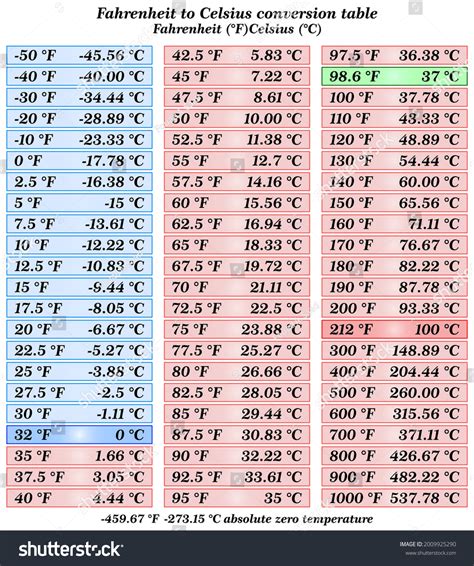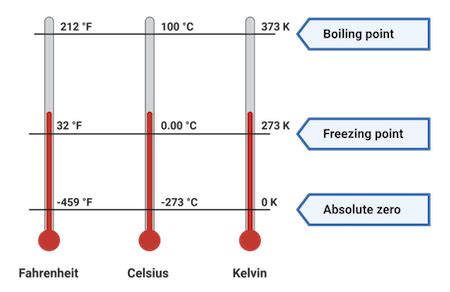Converting temperature from Fahrenheit to Celsius is a common task, especially when dealing with scientific data or interacting with individuals from different parts of the world. The Fahrenheit scale and the Celsius scale are two different temperature scales used to measure temperature. In this article, we'll delve into the process of converting 50 degrees Fahrenheit to Celsius, exploring the formula and the logic behind temperature conversions.
Understanding Temperature Scales

The Fahrenheit scale is primarily used in the United States, while the Celsius scale is used in most other countries and in scientific applications worldwide. The two scales have different freezing and boiling points for water: 32°F and 212°F for Fahrenheit, and 0°C and 100°C for Celsius. To convert between these two scales, a specific formula is applied.
Conversion Formula
The formula to convert Fahrenheit to Celsius is: °C = (°F - 32) × 5⁄9. This formula takes the temperature in Fahrenheit, subtracts 32 (the freezing point of water in Fahrenheit), multiplies the result by 5, and then divides by 9 to get the temperature in Celsius. Let’s apply this formula to convert 50°F to Celsius.
To convert 50°F to Celsius, we plug the value into the formula: °C = (50 - 32) × 5/9. First, we subtract 32 from 50, which equals 18. Then, we multiply 18 by 5, resulting in 90. Finally, we divide 90 by 9, which gives us 10. Therefore, 50°F is equivalent to 10°C.
| Temperature Scale | Value |
|---|---|
| Fahrenheit | 50°F |
| Celsius | 10°C |

Key Points
- The formula to convert Fahrenheit to Celsius is °C = (°F - 32) × 5/9.
- 50°F is equivalent to 10°C when applying the conversion formula.
- Understanding temperature scales is important for international communication and scientific research.
- The conversion process involves subtracting the freezing point of water in Fahrenheit, then applying a multiplication and division to adjust the scale.
- Temperature conversions have practical applications in everyday life, including weather forecasting, cooking, and health monitoring.
Practical Applications of Temperature Conversion

Temperature conversions are not limited to scientific research; they have numerous practical applications. For instance, when traveling abroad, understanding the local temperature scale can help in packing appropriate clothing and preparing for the weather conditions. In cooking, converting recipes from one temperature scale to another ensures that dishes are prepared correctly, regardless of the cook’s location.
Cooking and Temperature
In cooking, temperature plays a crucial role. Recipes often specify cooking temperatures, and converting these temperatures between Fahrenheit and Celsius is essential for achieving the desired outcome. For example, if a recipe requires baking at 350°F, converting this to Celsius (which is approximately 175°C) ensures that the dish is cooked at the right temperature, regardless of the oven’s temperature display.
Moreover, temperature conversions are vital in health monitoring. Medical devices often display temperature readings, and understanding these readings in both Fahrenheit and Celsius can be beneficial for patients and healthcare providers alike. The ability to convert between these scales quickly and accurately can improve patient care and communication between medical professionals.
| Application | Importance of Temperature Conversion |
|---|---|
| Cooking | Ensures recipes are prepared correctly, regardless of location. |
| Health Monitoring | Improves patient care and communication between medical professionals. |
| Weather Forecasting | Helps in understanding and preparing for weather conditions when traveling or planning outdoor activities. |
Conclusion and Future Perspectives
In conclusion, converting 50°F to Celsius involves a straightforward application of the conversion formula, resulting in 10°C. This process is emblematic of the broader need to understand and convert between different units and scales in various aspects of life. As the world becomes increasingly interconnected, the ability to communicate and apply knowledge across different systems and scales will become even more critical.
Looking forward, the importance of temperature conversions will not diminish. Instead, it will continue to play a vital role in scientific research, international communication, and practical applications. The ability to convert between Fahrenheit and Celsius with ease will remain a valuable skill, reflecting not just mathematical proficiency but also an understanding of the interconnectedness of global systems and the need for universal standards in measurement and communication.
Why is it important to know how to convert temperatures between Fahrenheit and Celsius?
+Knowing how to convert temperatures between Fahrenheit and Celsius is important for effective communication and application of knowledge in various contexts, including science, cooking, and health monitoring. It facilitates understanding and collaboration across different regions and professions.
What is the formula to convert Fahrenheit to Celsius?
+The formula to convert Fahrenheit to Celsius is °C = (°F - 32) × 5/9. This formula provides a straightforward way to convert temperatures from the Fahrenheit scale to the Celsius scale.
How does converting 50°F to Celsius relate to practical applications?
+Converting 50°F to Celsius, which equals 10°C, has practical implications in various fields, including cooking, health monitoring, and weather forecasting. It demonstrates the importance of understanding and applying temperature conversions in everyday life and professional settings.
Meta Description: Learn how to convert 50°F to Celsius with a step-by-step guide and understand the practical applications of temperature conversions in cooking, health, and more.
